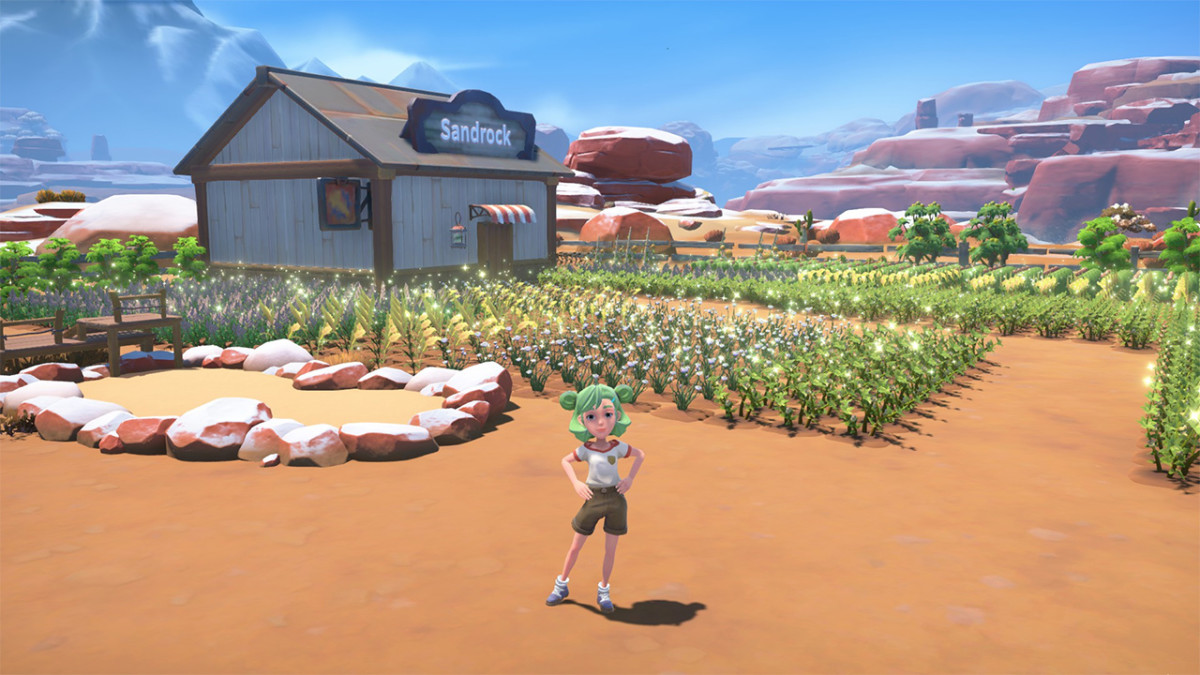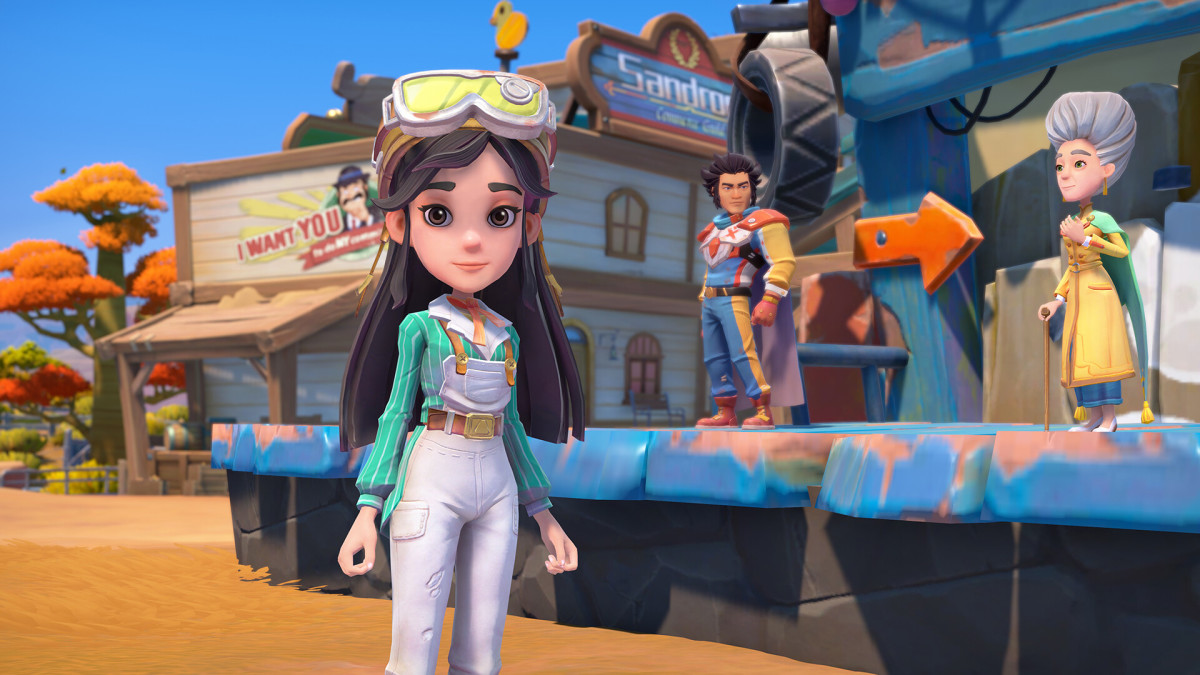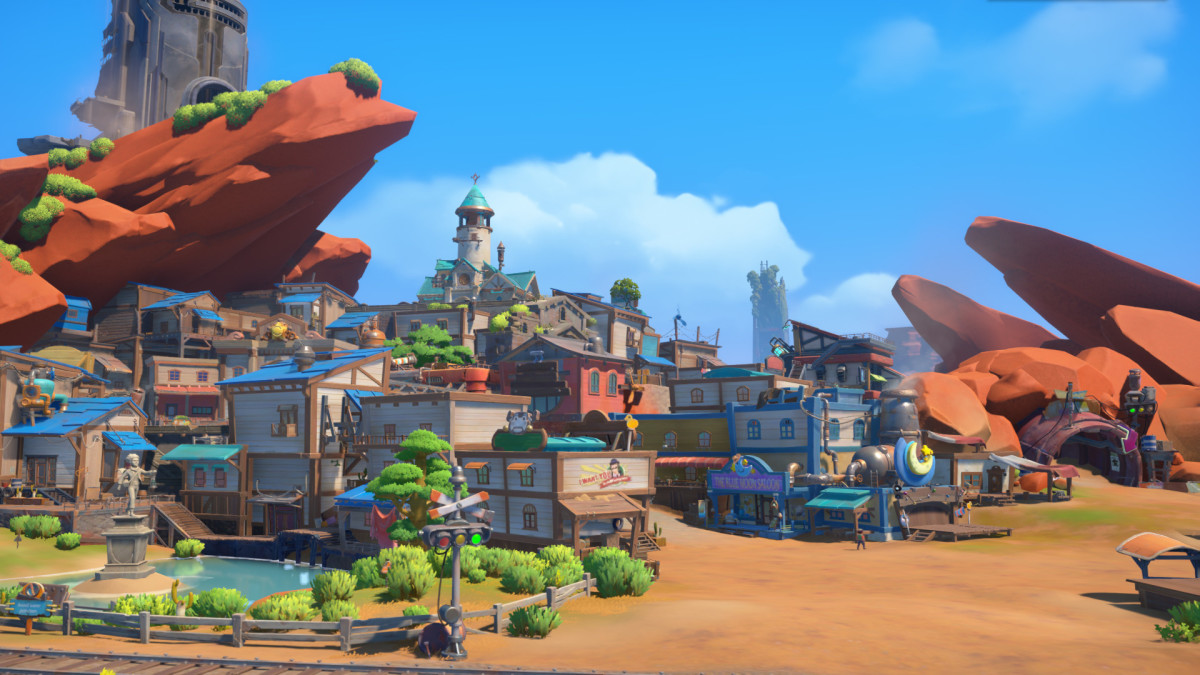My Time at Sandrock review: building a desert paradise

There has been no shortage of life-sim games over the past few years, but My Time at Portia was one that managed to stand out from the crowd thanks to its focus on building and production over farming, as well as the unique setting of a post-apocalyptic world that has long moved on from it and developed into a new wholesome society.
My Time at Sandrock has all of that charm still packed in. Exploring and living in this world has a strange flavor to it that you can’t find in similar games. Normally in a post-apocalyptic setting, that’s all anyone cares about mentioning, but Sandrock is set over 300 years later, so instead it’s just a story to everyone, and they’re just getting on with their simple and friendly lives.

Still, it makes those remnants of the old world exciting to uncover. It’s a fun moment to dive into your first set of abandoned ruins to mine for resources, only to discover it’s a run-down office building from the old world. You might think the cartoony art style would conflict with the tone, but the fact-of-life way that every character treats these things means you also stop noticing how weird it is.
That’s not actually what you’ll be spending most of your time in Sandrock doing. Instead, it focuses on the beautiful loop of harvesting and manufacturing resources. It taps into the mindless enjoyment of things like Satisfactory or Factorio, where you’re constantly making things, to make things, to make more things, to make better things.
Unlike those games though, Sandrock doesn’t lean too heavily on it and gives you plenty of other things to do so you’re not just staring at timers waiting for production to be done. You’re walked through a bit of a slow start, but once the game takes the training wheels off you’ll find characters throwing you more quests than you know what to do with.

Often, these quests will be to build stuff, but there are plenty of other activities. I was once wandering the desert when I met a boxing kangaroo who could, sort of, talk. Except he took all of my requests for friendship as incitement to fight then we became arch nemeses, at least in my mind.
There are plenty of mysteries around town as well. As soon as you arrive you’ll learn of the lizard-like Geeglers who are threatening the town as well as a violent bandit who was once a beloved member of the community. These plot threads slowly unravel as you develop the town, and it’s not just these big ideas either – many of the characters in the town also have their own questlines that let you explore their personalities and relationships in great detail.
As you progress your building career you really feel the impact you’re having on the residents of Sandrock, making life in this desert town a lot better for everyone. That said, you don’t actually affect that town itself as much as I’d like. The vast majority of the major building projects in the main story are to simply repair things that got broken, like the town’s train bridge or water tower, rather than actually adding anything new.

There are bits of it – items and stalls you create during side quests – but I wanted something grander in scale that actually causes the town to visually grow over time and alter the status quo, rather than just repairing old builds. Your workshop is the only area where that actually happens, and that is satisfying to see as you expand your land, build new buildings, and customize your house with great freedom. However, even that is on the very edge of town and doesn’t feel like you’re growing the community.
Still, while the town may not change as much as I’d like, the people in it definitely do. Growing your relationships is no different than any other life sim – work out what their favorite item is and then give it to them every day until they love you – but since everyone has their own questlines that often interweave with other characters, they feel far more fleshed out than in most other games in the genre, where all you get is daily dialogue and the occasional cutscene.
Sandrock never slows down either. Plenty of life-sim games can get into a bit of a rut in the mid-to-late game where the fun activities and quests dry up, but this game keeps the momentum going much longer than you’d expect – both in terms of the progression loop and the story content.

Over 30 hours in I still have new people showing up in town, new areas of the map being introduced, and my book of craftable objects is far from full. My Time at Portia was easily a 60+ hour game, and Sandrock will almost certainly eclipse that number, plus the roadmap from the developers promises even more content coming around Christmas, as well as a multiplayer update sometime next year.
The trade-off for all of this is that there are visible technical flaws with the game. Playing on PS5, the pop-in of objects is very noticeable and jarring, and while things like stutters and frame drops are infrequent, they do still rear their head from time to time and it’s rather frustrating. It doesn’t hinder gameplay too much, but it’s impossible not to notice it.
My Time at Sandrock is easily the best life-sim of 2023. While it’s not perfect, I haven’t been so immediately grabbed and long-term addicted to a game like this since I first played Stardew Valley, and it’ll be in my regular rota for the rest of the year. It puts its best foot forward with the production and building side of things, then keeps you coming back with seemingly endless side quests and well-developed characters.
Score: 9/10
Version tested: PS5
- Visuals: 8/10
- Story: 9/10
- Gameplay: 10/10
- Performance: 7/10
The Arena Media Brands, LLC and its partners may receive compensation for links to products and services on this website.
You can pre-order My Time at Sandrock on Amazon and get it in time for launch on November 2.
My Time at Sandrock technical performance
As mentioned in the main review, My Time at Sandrock has noticeable technical problems on PS5, but they’re not game-breaking. Pop-in is the biggest issue, as objects not that far away from you won’t render, while characters and monsters will, creating a rather jarring sight. This goes extra for when a building in the far distance doesn’t load, but the snow effect on top of it does.
Frame drops and stutters do happen now and then, but they aren’t too intrusive, and each patch seems to make them occur less and less, making them pretty easy to ignore when you’re deep in the flow of its addicting gameplay.
